#STAR WARS REBEL ASSAULT II THE HIDDEN EMPIRE
Text

USA 1997
#USA1997#LUCASARTS#ACTION#LICENSED#STAR WARS#IBM#MACINTOSH#PS1#STAR WARS DARK FORCES#STAR WARS REBEL ASSAULT II THE HIDDEN EMPIRE
32 notes
·
View notes
Text
Sony Interactive Entertainment hat die Neuzugänge im PlayStation Plus Spielkatalog für April 2024 bekannt gegeben, zu denen mehrere spannende Spiele für Extra- und Premium-Abonnenten zählen. Im Gegensatz zu den Spielen des PlayStation Plus Essential, die allen Abonnenten zur Verfügung stehen, bieten der Spielkatalog und die Klassikertitel exklusiven Content für Mitglieder der höheren Stufen. Die Aufnahme verschiedenster Genres und Spiele zielt darauf ab, das Spielerlebnis im gesamten PlayStation-Netzwerk zu bereichern.
PlayStation Plus Extra und Premium | Highlights des Spielkatalogs
Dave the Diver - Dieses Unterwasser-Abenteuerspiel ermöglicht es den Spielenden, das Meeresleben in einer lebendigen Unterwasserwelt zu erkunden, verfügbar für PS4 und PS5.
Tales of Kenzera: Zau - Eine epische Rollenspielreise, verfügbar auf PS5, erscheint am 23. April.
The Crew 2 - Ein umfangreiches Open-World-Rennspiel, das die Spielenden durch eine Miniaturversion der Vereinigten Staaten führt, verfügbar auf PS4.
Construction Simulator - Ermöglicht es den Spielenden, schwere Baumaschinen zu bedienen und Bauprojekte zu übernehmen, verfügbar für PS4 und PS5.
Nour: Play With Your Food - Dieses experimentelle Spiel fördert die spielerische Interaktion mit Essen, verfügbar für PS4 und PS5.
Deliver Us Mars - Ein Abenteuerspiel, das die Spielenden herausfordert, in der rauen Umgebung des Mars zu überleben, verfügbar für PS4 und PS5.
Animal Well - Ein einzigartiges und geheimnisvolles Plattformspiel, das am 9. Mai dem Spielkatalog beitreten wird, verfügbar auf PS5.
Zusätzliche Titel für eine vielfältige Spielerfahrung
Oddballers - Ein verrücktes Party-Spiel voller Spaß und Chaos, verfügbar auf PS4.
Raji: An Ancient Epic - Ein Action-Adventure-Spiel, das in die alte indische Mythologie eintaucht, verfügbar auf PS4 und PS5.
Lego Ninjago Movie Videogame - Basierend auf dem Animationsfilm, bietet dieses Spiel spannende Abenteuer, verfügbar auf PS4.
Lego Marvel’s Avengers - Tauche in die Welt von Marvel ein und genieße ein Superhelden-Abenteuer, verfügbar auf PS4.
Miasma Chronicles - Ein neuer Eintrag im Genre der taktischen Abenteuer mit einer reichhaltigen Erzählung, verfügbar auf PS5.
Stray Blade - Ein Action-RPG mit tiefgründiger Lore und packendem Kampfsystem, verfügbar auf PS5.
PlayStation Plus Premium | Klassiker-Katalog
Alone in the Dark: The New Nightmare - Entdecke den Schrecken neu in diesem klassischen Survival-Horror, verfügbar auf PS4 und PS5.
Star Wars: Rebel Assault II: The Hidden Empire - Erlebe eine abenteuerliche Weltraumsaga in diesem klassischen Star Wars-Titel, verfügbar auf PS4 und PS5.
MediEvil - Kehre auf das Schlachtfeld zurück, um gegen Untote in diesem humorvollen mittelalterlichen Abenteuer zu kämpfen, verfügbar auf PS4 und PS5.
Aktuelle und kommende Entwicklungen im Gaming-Bereich
Neue Updates haben auch zusätzliche Entwicklungen beleuchtet:
Stellar Blade wird bald New Game Plus und kostenlose Skins als Teil seines nächsten Updates anbieten, was das Gameplay mit neuen Features und Anpassungsmöglichkeiten verbessert.
C-Smash VRS, ursprünglich ein VR-Spiel, wird diesen Sommer eine Version ohne VR auf der PS5 veröffentlichen, was es einem breiteren Publikum zugänglich macht.
Hollow Knight: Silksong wurde in Südkorea eingestuft, was auf eine bevorstehende Veröffentlichung hindeutet und die Vorfreude in der Spielergemeinschaft steigert.
In verwandten Nachrichten ist die Gaming-Welt auch gespannt auf den möglichen Einfluss von TopSpin 2K25 auf die Nintendo Switch und die neuesten Updates und Nerfs in Warzone, welche die Strategien der Spieler maßgeblich verändern dürften.
Fazit
Das Update für April 2024 im PlayStation Plus Spielkatalog und die Klassikertitel bringen eine erfrischende Vielfalt von Spielen für PlayStation-Abonnenten, die neue Abenteuer und nostalgische Erlebnisse gleichermaßen versprechen. Diese bereichernde Sammlung zielt nicht nur darauf ab, erstklassige Unterhaltung zu liefern, sondern auch das Gesamtengagement der Nutzer mit der PlayStation-Plattform zu erhöhen.
Quelle
0 notes
Text
PlayStation Plus Monthly Games for April: Immortals of Aveum, Minecraft Legends, Skul: The Hero Slayer [ Star Wars: Rebel Assault II: The Hidden Empire ]
PlayStation Plus Monthly Games for April: Immortals of Aveum, Minecraft
Legends, Skul: The Hero Slayer [Highlights]
Blast magic, embark on a (blocky) fantasy adventure and free your demon
brethren with April’s Monthly Games lineup for PlayStation Plus.
One of April 2024’s PS Plus Premium classics has apparently leaked. A
PlayStation Store tracking website found references to Star…

View On WordPress
0 notes
Text
Some Notes on the Style of Star Wars Intros
This post has nothing to do with Disney or their movies.
Hello. I've been intaking a lot of Star Wars content recently. I've been seeing a lot of things done that irk me, so I want to share with you all the style I've noticed from watching Episodes I-VI.
I. The Title
So watching the films, stylistically, the full title of, we'll say Episode I as an example, is: STAR WARS: Episode I - THE PHANTOM MENACE. In the intro, the title should be in all caps. If it's part of a series, that part comes first, and should be in uh. I forget the name of it now but the thing where they're all capital letters, but the first letter is capitalized and the others are the size of normal letters, but they're all capital letters. Of course, the logo is all caps, but you know that by now. It's UNIVERSE TITLE: Series Title - WORK TITLE. STAR WARS: Rogue Squadron III - REBEL STRIKE. STAR WARS: Jedi Knight II - JEDI OUTCAST. STAR WARS: The Force Unleashed II. STAR WARS: BOUNTY HUNTER. STAR WARS: The Clone Wars - RISE OF THE BOUNTY HUNTERS. This is the way these titles should be formatted, though I can't speak as to whether they are or not.
II. Punctuation
Avoid exclamation points, questions marks, quotation marks, and anything else odd. Periods and commas are what make it. I did not keep an eye out for colons and semicolons, but I'd bet they're okay, too.
A single exclamation point appears in Episode III after the first word: War! This is acceptable because it's like a newsreel. Read it out loud in an old-timey voice and it'll sound right. Avoid overuse, however; there's only one exclamation point in six movies' worth of intros.
At the end of your crawl, have a four-point ellipsis. It's like this.... I don't know why.
III. Capitalization
Of course, capitalize your proper nouns, but don't put anything in all caps unless it is of galactic importance. All-caps words appear in three crawls, half of the films. The all-caps words are ARMY OF THE REPUBLIC in Attack of the Clones, DEATH STAR in Episode IV, and GALACTIC EMPIRE in Episode VI. Character names, group names, none of those are capitalized, with the sole exception of Army of the Republic; this is acceptable not because it is a group, but because before it is created, there is no army; you can't create an army if you already have one, can you? The ramifications of the creation of an army are galactic: the discord that leads to the Clone Wars, the fall of the Republic, the rise of the Empire, and the Galactic Civil War. The army itself is not galactic, but the ramifications are. Same with the Death Star, a culmination of three films' worth of build-up; we see the plans in Episode II and construction started in Episode III, and then it's complete and ready to destroy in Episode IV. Galactic Empire needs no explanation, I trust.
Do not capitalize character names, group names, or anything that's not of GALACTIC IMPORTANCE.
Yeah, that's it. Lucasfilm is not above making mistakes; I watched the crawls from all the LucasArts-developed Star Wars video games (13 crawls in total), and ten of them had words in all-caps. While two of those were in alignment with the films (DEATH STAR in STAR WARS: DARK FORCES and GALACTIC EMPIRE in STAR WARS REBEL ASSAULT: Episode II - THE HIDDEN EMPIRE), six of those were character names. STAR WARS: OBI-WAN goes to the insane lengths of all-caps'ing every character mentioned in their opening crawl, plus the term JEDI KNIGHTS. The point here is, if LucasArts can make mistakes and still answer to The Big Man, it's okay for you to make mistakes. I probably have myself. But now I'm putting this out here so maybe we can all do it differently.
Here's every ALL-CAPS words from the films and the video games, plus the sole exclamation point:
Episode II - Attack of the Clones: ARMY OF THE REPUBLIC
Episode III - Revenge of the Sith: War!
Episode IV - A New Hope: DEATH STAR
Episode VI - Return of the Jedi: GALACTIC EMPIRE
Dark Forces: DEATH STAR
REBEL ASSAULT: Episode II - The Hidden Empire: GALACTIC EMPIRE
Dark Forces II - Jedi Knight: DEATH STAR, DARK JEDI, JEREC, VALLEY OF THE JEDI
Episode I Racer: GALACTIC PODRACING CIRCUIT, BOONTA CLASSIC
Obi-Wan: JEDI KNIGHTS, OBI-WAN KENOBI, JEDI KNIGHT, QUI-GON JINN, OBI-WAN, MACE WINDU
Starfighter: RHYS DALLOWS, VANA SAGE, NYM
Jedi Starfighter: ADI GALLIA, CAVIK TOTH
Bounty Hunter: BANDO GORA
The Force Unleashed: GALACTIC EMPIRE, DARTH VADER
The Force Unleashed II: DARTH VADER, GALACTIC EMPIRE, RAHM KOTA
0 notes
Photo

‘Auchan - “The Best Christmas Games are at AUCHAN”‘
[’Aliens’, ‘Apache Longbow’, ‘Battle Isle 3′, ‘The Dig’, ‘Heroes of Might and Magic’, ‘MechWarrior 2′, ‘Myst’, ‘Pro Pinball’, ‘Rayman’, ‘Star Wars: Rebel Assault II - The Hidden Empire’, ‘Warcraft II: Tides of Darkness’]
[VARIOUS] [FRANCE] [MAGAZINE] [1996]
Génération 4, January 1996 (#84)
via Abandonware Magazines
#gaming#advertising#auchan#pc#mac#licensed#aliens#apache longbow#battle isle 3#the dig#heroes of might and magic#mechwarrior#mechwarrior 2#myst#pro pinball#rayman#star wars#rebel assault ii#the hidden empire#warcraft#warcraft ii#tides of darkness#retailers#france#1996#computer games
16 notes
·
View notes
Photo
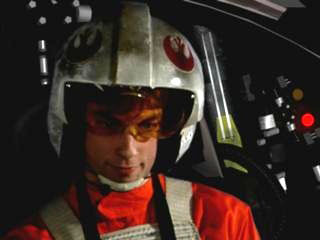
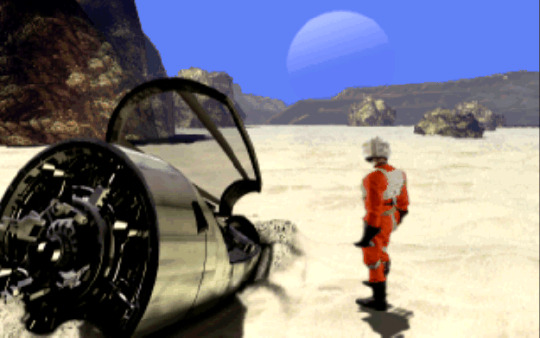
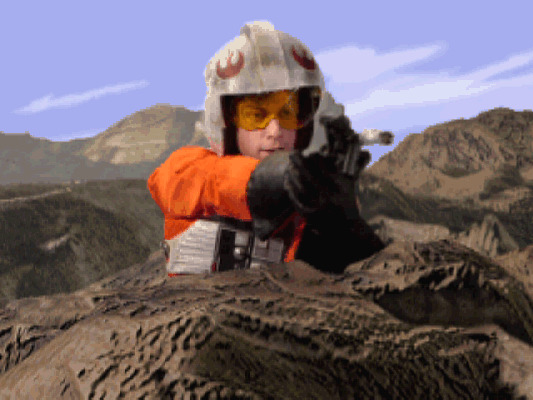
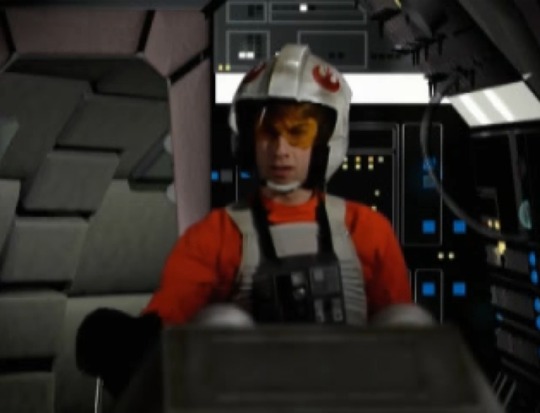

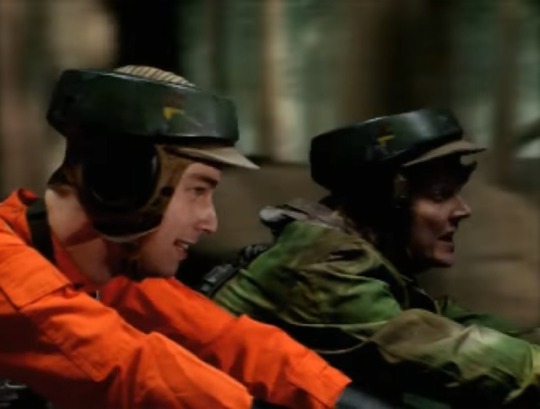

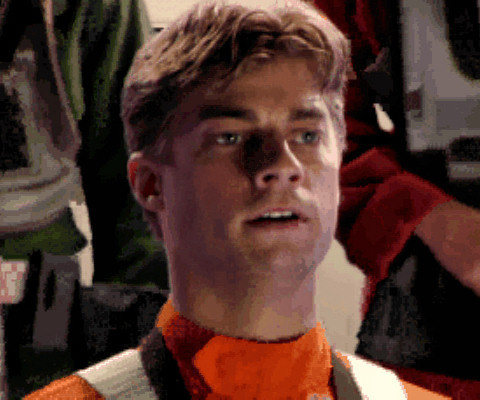
Rookie One.
#star wars#lucasfilm#lucasarts#rebel assault II#the hidden empire#rookie one#retrogaming#retrocomputing#jamison jones#90s#microsoft#windows#sony#playstation#rail shooter#dreighton#rebel alliance#rebellion#empire#stormtrooper#ru merleen#julie eccles#yt1300#corellia star#yt-1300
4 notes
·
View notes
Text
How the Empire could’ve won the war
Imagine if The Empire had competent military leaders and decided to bypass Palpatine’s overconfidence and incompetence. These are ways I think the Empire could’ve won. Before anyone calls me out, this is just for fun and I do not believe they should’ve won, I just think if more competent Imperials were in charge aside from Thrawn, The Empire could’ve won.
Better PR. Seriously, The Case for the Empire lays out an excellent defense for the Galactic Empire. Basically, the Republic was rotting, everyone saw that. All the Empire had to do was take power and not make people desperate enough to rebel. Keep the peace, enforce the law and not be so heavy handed.
Do not be dependent on fear. When Palpatine ascended as emperor, ended the rotting Republic and ended the Clone Wars basically everyone was happy. However in only 20+ years he went from most loved person in the galaxy to the most feared/hated one. There was no need to build the Death Stars and such a massive military. Those were necessary for rule through fear. But instead of fear Palpatine could’ve ruled by love. He was definitely cunning enough to fool the galaxy further. Instead Palpatine’s, Vader’s and Tarkin’s methods led to a creation of a giant rebellion that brought the Empire down.
Act like a real Empire with no Xenophobia. Induct alien races into their empire and continue their expansion by conquering territory while promoting their way of life over others. Their downfall was being dogmatic and authoritarian to the point that everyone rebelled against their regime.
Don’t terrorize other species. Whether Palpatine genuinely hated other races than humans or just pretended to do in order to divide his potential enemies it was a bad move. Excluding non-humans from the upper echelons of the Imperial military and power structure (Thrawn, Grand Inquisitor or Mas Amedda excluded) limited the Empire’s power base. Terrorizing other species created more enemies the Empire had to deal with and which helped to brought it down.
Krennic’s survival. I fee like the Death Star might not have been destroyed in A New Hope if Orson Krennic was still in charge. He was far more in tune with the battlestation’s capabilities than Tarkin ever was. I feel like he would have recognized the threat to the base sooner and squashed the Rebel fighters in the trench sooner He wasn't afraid to get into the battle and it really wasn't his fault that the plans fell into the wrong hands, the Rebels just outclassed the Empire during that sneak attack. Tarkin's blind arrogance and underestimation of the Rebels is what allowed the Death Star to be destroyed.
A New Hope
1. Recover any jettisoned escape pods right away, otherwise destroy them: Some see this a major plot hole. I'd say people (and imperial personnel, for that matter), do make mistakes. To avoid those, they should have had a pursuit protocol: Pull the captured ship in, then close the doors, maybe have two or three squadrons of TIE fighters doing the rounds, in case a escape pod gets out before the doors are closed and, more important, have some recovery ships out, so that fleeing pods can be captured instead of just blasted into oblivion. A captured pod can be searched. As far as we know, only one copy of the plans was made.
2. Disable the Millenium Falcon: You just captured a ship that matches another ship you were chasing, no one is inside, at the very least, take the keys off the ignition, remove the battery, maybe secure it with a chain and a lock. And they had time to work on it, enough time to install a tracking device, anyway. However, I'm willing to give them this one: Let's say they were absolutely sure the Rebellion would not find anything useful by looking at the plans, so it was fine to let them escape with them, make presumably a hundred copies and spread them across the galaxy. That level of confidence in your development and validation teams is amazing. Not only do you think a potential enemy will not find any flaws, but you're also convinced they won't try to build their own space station using your plans. Bravo.
3. Build an Imperial blockade of Star Destroyers around the Death Star.
4. Send the Imperial Fleet to Yavin IV, not your ultimate weapon: The Death Star had just accomplished what it had been built to do: It was a last-resort enforcer of policy. They destroyed an entire, fully populated planet, because Tarkin wanted to do a demonstration. That was stupid, but effective anyway, it would definitely make it into the news all over the place. Then you put the gun away, hopefully never to use it again. Any opposition in the galaxy would have crumbled at the chance of seeing that thing show up in the sky. They had tracked the Millenium Falcon to Yavin IV, but the Rebel Fleet was clearly not there. The attack on the Death Star was executed with thirty small ships, hardly a major engagement (unlike the battle against the second Death Star). If anything, the Battle of Yavin could have been compared in size to the Battle of Hoth, which was dealt with using a subset of the Imperial Navy, plus infantry. In the meantime, they could have done some additional vulnerability analysis with the Death Star well hidden elsewhere, find the exhaust port and maybe even other vulnerabilities, and put torpedo-proof blinds on it.
Empire Strikes Back
1. The Battle of Hoth: There are eight Star Destroyers (Executor, 6 smaller but still impressive Star Destroyers of two classes and one Victory class) involved. Executor closes with the planet and proceeds to blast the surface with their turbolaser batteries, ignoring the shield generator. Eventually the base with flood (with magma or ice). The two Imperial-1 class destroyers fly interference for the Executor, keeping fighter wings in the air as well as intercepting anything attempting to escape. The four Imperial-II class destroyers blockade the planet: One at each pole, and one either side of the equator to watch for trickery. The Victory class destroyer is a mobile interception device for capital ships and corvettes launching from Hoth. Now all they need to do is wait. They'll either pick the base off piecemeal, destroy it with Turbolaser Terraforming or the rebels will attempt to flee: In which case, the remaining destroyers will pick them off. The Ion Cannon doesn't act as a permenent 'disable', the base has a limited power generator and there are too many ships for the Ion Cannon to cover for. The planet will give way long before they starve the rebels out. Hell, the 501st had elements in the fleet sent, they could have just left everyone in orbit and stuffed Vader with them into a drop pod, unleashing on the base instead of the costly assault.
2. On Bespin: A heavier hand. The figurehead of the rebellion and five of its greater heroes were present.. and all of them got away. As soon as the trap was sprung, simply moving in with heavy interception cover would have been enough to decapitate the Rebellion. They had, at the bare minimum, twelve fighters: Three ties, 8 tie-interdictors and at least one Tie Defender (Which was probably capable of destroying the Falcon alone). They'd surrender before dying, so Vader gets his apprent-er, 'the emperor's prize', the Rebellion gets executed in a suitable gory fashion on Galactic Holovision and the Rebellion ends.
3. The Falcon, a known dangerous and rebel-owned craft, was sitting on its landing pad the whole time. You've got EIGHT Tie Interdictors (bombers) prowling Bespin. Maybe one could spare a second to drop some ordinance on the powered down craft? The one on a pad with no supports barring its umbilical, about 50-100m out from its parent building?
4. If you won’t destroy the Falcon, criple the Falcon. Seriously, cripple the Falcon: The same technicians who disabled the hyperdrive could've taken a few more minutes to mess up the rest, making it unable to take off. Leia, Chewie, Lando and the droids were already surrounded at the landing platform. It would've ended up in a horrible standoff or maybe even a peaceful surrender. But it would have ended there. Afterwards, Vader would've sensed and captured Luke, making sure he was given top-notch medical attention and a high-end replacement hand. Then, who knows, maybe he could've have enjoyed some much-needed face time with his dad and get things off to a better start.
Return Of The Jedi
0. Jabba The Hutt is smart. Jabba does not hold a grand execution. He has Luke, Han, Leia, Chewbacca, Lando and the droids at his mercy. He plans to offer them up as hostages to the Empire. Since it's established that Vader and Jabba became partners in the new canon comics, I could see The Empire paying Jabba's demands. Jabba’s demands are simple. Money, a replacement Rancor and Princess Leia as his personal slave for the rest of her life. The Empire is more than happy to oblige. Vader comes to Jabba’s palace and takes the Rebels. The droids are dismantled. Han, Lando and Chewbacca are executed. Leia remains by Jabba’s side as a slave. Now that Luke has nothing left, he embraces his destiny and joins his father. They take out The Emperor and rule the galaxy as father and son.
1. Stop and arrest the crew of the stolen imperial shuttle: Part of this is pure speculation, but I assume the crew led into Endor by Han Solo had no way to let their fleet know that they had made it. So, as a perfect corollary to a great plan to force the Rebel Fleet into a decisive battle, set up an ambush to capture the advance team on the ground on Endor as soon as they set foot on it. Of course, it would be a lot easier to just blast the shuttle before it even lands. The thing was loaded with explosives, even a humble stormtrooper with a thermal detonator could have done the work. Of course, Vader would have been upset because of his insistence in mixing family and business. In any case, the generator shield would have remained intact, with the second Death Star being fully operational: It did manage to do a lot of damage to the Rebel Fleet, and the Imperial Navy could've done the rest once they started fighting at close range. Also, think of the fact that the Rebels would've had Lando Calrissian insisting that they should wait on Han to blow up the shield. At that moment, Han would've been either dead or sitting in a cell. And the assault on the Death Star II would’ve been a failure.
2. Vader tries to convince his son to join willingly. Vader does very little to connect with his son. He wants to call him Anakin? That's fine, let him do it. In fact, Vader could have used that to tell him his story, after all, the Jedi were indeed very arrogant and unfair towards Anakin, let Luke know that. Maybe even tell him about Padme, he seemed very curious about his mom, he would've listened to that. Same goes for the Emperor, instead of antagonizing Luke from the beginning, he could have asked him about the things he disliked about the Empire. What reforms would he support? Would he be willing to lead some of those reforms from the inside? Just because you're bad, doesn't mean you need to be crass. Also, Palpatine was friends with Padme, right to the very end, bring that up as well.
3. Exterminate the Ewoks. The Empire is not above genocide and would showcase even more reason to want to take them down. They're a warrior culture. You know it, they know it. Your first expedition to Endor was nearly foiled by the furry little bastards, who were surprised and outnumbered. You know, the one where they were looking for a site to set up the shield generator for the second Death Star? Or don't even bother! First, glass the area with turbolasers. A quick planetary firestorm and you've got a nice wasteland to build your facilities in. Suddenly, no ewoks. You can see the rebels coming a few kilometers away. Problem solved, no exploding battlestation.
Build the Death Star II around Coruscant. This is the heart of the enemy. It's in the galactic core, there is plenty of space for a shield generator and it is HEAVILY defended. Not only is it heavily defended, it's even further into the Core than Coruscant and Palpatine is even more powerful there. He can very literally puppet a good portion of the population.
Practical Mass Production Vs. Egomaniacal Engineering. Bigger is not always better. Constantly seeking to build bigger military weapons takes time, money, and resources all of which could be used towards the mass production and perfection of smaller weapons. For example, how many millions of Republic credits does an Imperial AT-AT walker cost and how completely unnecessary is a vehicle of that size on the battlefield? The Empire already has a fighting force a million times larger than any other in the galaxy, why does it need to waste time on things like Death Stars and Super Star Destroyers? Building smaller fighters and ships is the better way to go. Build more Interdictor-class cruisers. These ships used mass shadow generators to literally pull ships from hyperspace by projecting an illusion of the gravity well of a planet. In Star Wars a ship cannot go into hyperspace while inside a planet’s gravity well. This means that any rebel ships that unwittingly raid an Imperial facility where an Interdictor class vessel is present are sitting ducks from the moment they are sucked out of hyperspace. In the Imperial Handbook: A Commander’s Guide, Princess Leia writes that “if the Empire had known how to build smart instead of big they would have built thousands more Interdictors.” She goes on to claim that, if they had, the Rebel Alliance “might not have survived.”
Give Tie-Fighters armor and shields. Sacrificing armour and shielding for maneuverability and speed is gross incompetence. With armour and shielding plus the talented Imperial Pilots, you have an Imperial Navy that is a force to be reckoned with.
Do not sacrifice quality for quantity for the Stormtroopers. They are as they are meant to be, elite soldiers of the Imperial Military. So do just that. Make them elite, feared and powerful. Only recruit the best. Give better protection and the best tech. Give the quality of the Clone Troopers, but improve on that for the Stormtroopers and you have an army worth fearing.
Continued Production Of Dark Troopers. Sometimes a top secret expensive weapon can give you an advantage in war. One that the enemy will never see coming and not have the slightest hope in the universe of stopping. Enter the Imperial Dark Trooper, a seven-foot tall robot who fights better than any human being, has a jetpack, fast, fires a supercharged weapon that shoots both high concentrated plasma and rockets, and is considerably scary looking. A simply platoon's worth of these guys is enough to wipe out entire outposts and bases of their enemy. They work fast and leave nothing, but death in their wake. After a few minutes whatever was their target is gone, reduced to smoldering ruins. Sometimes their victims don't even have time to make a distress call. Needless to say, they're bad news, though they remain pretty much unheard of. Fortunately for the good guys, the Empire never got around to truly deploying the Dark Troopers in great numbers like the Trade Federation did with their goofy battle droids. You may already know the history from playing the classic first-person shooter Dark Forces, of course: the mercenary Kyle Katarn was able to locate the secret production facility for Dark Troopers in space. Once aboard the Arc Hammer, he destroyed the ship and the Dark Trooper menace was put out of commission to almost never be seen again. If they did have more than one facility, and use Dark Troopers solely in their battles and invasions, keeping the regular storm troopers in reserve, The Rebels would not have a hope of winning.
Design better Death Stars. This might be the single most obvious and easiest solution to them all. If you build a planet-sized space station, then you don't leave a small hole two meters wide for the enemy to launch torpedoes into. Now the idea of a Space Station needing an exhaust port does make sense in that pseudo sci-fi way. Don't want our Stormtroopers dying in the middle of the night to carbon monoxide ventilation problems, do? But why not place a metal slab with slits over it? Or raise the metal slab so the vents are on the sides? Or make the ventilation pipe more crooked inside so it's not a straight shot to the reactor core? What if? What if? What if? There are so many painfully simple solutions to the problem. I can forgive the idea of the second Death Star being blown up because it was still under construction, although - I'll say again - if the exhaust system leading to the reactor core isn't made in a stupid straight line then a ship isn't going to be able to pass through it.
Make Thrawn the commanding officer on Endor. I know what you must be thinking, Thrawn was sent away via Rebels finale. Let’s just say this is a scenario where Thrawn was successful on Lothal. Thrawn would have shown up weeks before the battle, taken one look at the "primitive natives" on Endor, and figured out a way to stop them from beating up AT-STs with giant wooden logs or killing stormtroopers with rocks. The Death Star lives, the Rebel fleet gets completely wiped out. Mobilizes the fleet comprised of Interdictor-class cruisers and Tie-Defenders. Thrawn would be smart enough not to allow Luke anywhere near The Emperor. Thrawn would successfully either destroy the shuttle or capture the landing party. Thrawn would convince Palpatine it is safer to execute the Jedi and Palpatine agrees and if Vader objects, Palpatine would just unleash a storm of force lightning killing Vader and securing victory for the Empire once and for all.
#star wars#the galactic empire#Emperor Sheev Palpatine#darth sidious#darth vader#grand admiral thrawn#stormtroopers#tie fighters#the death star
3 notes
·
View notes
Text
ESSENTIAL STAR WARS LEGENDS/EXPANDED UNIVERSE BOOKS.
Many people have asked for that, so I decided to do a list with the essential novels and comics of the EU/Legends. This is my personal opinion and I have a very bad memory too so I guess, I haven’t included many others, so if you think there’s a book or any other EU content that should be on this list too, please, just let me know and I’ll put them on this list.
Obviously, I haven’t read all the books of the EU and tbh I’m not a fan of anything related to Rise of the Empire era, prequels, and The Clone Wars. All my favorite content is from Rebellion Era and post-ROTJ.
Anyway, here it’s my list of the most important novels and comics of the EU.
The EU books are divided into different eras.
Before the Republic Era - 37,000 BBY to 25,000 BBY
Old Republic Era - 5000 BBY (years before the Battle of Yavin to 1000 BBY)
Rise of the Empire Era - 1000 BBY to 22 BBY
Clone Wars Era - 22 BBY to 19 BBY
Imperial Era - 19 BBY to 0 BBY
Rebellion Era - 0 BBY to 4 ABY (4 years after the Battle of Yavin)
New Republic Era - 5.5 ABY to 22 ABY
New Jedi Order Era - 24.5 ABY to 36 ABY
Legacy Era - 40 ABY to 139 ABY
BEFORE THE REPUBLIC ERA
Dawn of the Jedi: Into The Void
Dawn of the Jedi
Force Storm
The Prisoner of Bogan
Force War
OLD REPUBLIC ERA
Tales of the Jedi
The Golden Age of the Sith
The Fall of the Sith Empire
Ulic Qel-Droma and the Beast Wars of Onderon
The Saga of Nomi Sunrider
The Freedon Nadd Uprising
Dark Lords of the Sith
The Sith War
Redemption
Crosscurrent
Knights of The Old Republic (Comics)
Crossroads
Commencement
Flashpoint
Reunion
Days of Fear
Nights of Anger
Daze of Hate
Knights of Suffering
Vector
Exalted
Turnabout
Vindication
Prophet Motive
Faithful Execution
Dueling Ambitions
Masks
The Reaping
Destroyer
Demon
War
The Old Republic Novels
Fatal Alliance
Deceived
Revan
Annihilation
Knight Errant
Aflame
Deluge
Escape
Darth Bane Trilogy
Path of Destruction
Rule of Two
Dynasty of Evil
RISE OF THE EMPIRE ERA
Legacy of the Jedi
Part 1 (chapter 1 onward) takes place during 89 BBY.
Part 2, "Dooku and Qui-Gon Jinn" (chapter 7 onward) takes place during 76 BBY.
Part 3 "Qui-Gon Jinn and Obi-Wan Kenobi" (chapter 14 onward) takes place during 44 BBY.
Part 4 "Obi-Wan Kenobi and Anakin Skywalker" (chapter 20 onward) takes place during 22 BBY
Darth Plagueis
Jedi: The Dark Side
Jedi Apprentice
The Rising Force
The Dark Rival
The Hidden Past
The Mark of the Crown
The Defenders of the Dead
The Uncertain Path
The Captive Temple
The Day of Reckoning
The Fight for Truth
The Shattered Peace
The Deadly Hunter
The Evil Experiment
The Dangerous Rescue
The Ties That Bind
The Death of Hope
The Call to Vengeance
The Only Witness
The Threat Within
Secrets of the Jedi
The Rise and Fall of Darth Vader
Cloak of Deception
Episode I: The Phantom Menace (Novelization)
Republic
Prelude to Rebellion
Vow of Justice
Outlander
Emissaries to Malastare
Twilight
Infinity's End
The Hunt for Aurra Sing
Darkness
The Stark Hyperspace War
The Devaronian Version
Rite of Passage
Honor and Duty
The New Face of War
The Battle of Jabiim
Show of Force
Dreadnaughts of Rendili
Trackdown
Siege of Saleucami
Into the Unknown
Hidden Enemy
Jedi Quest
Path to Truth
The Way of the Apprentice
The Trail of the Jedi
The Dangerous Games
The Master of Disguise
The School of Fear
The Shadow Trap
The Moment of Truth
The Changing of the Guard
The False Peace
The Final Showdown
Outbound Flight
The Approaching Storm
Episode II Attack of the Clones (Novelization)
The Cestus Deception
Jedi Trial
Episode III Revenge of the Sith (Novelization)
Dark Lord: The Rise of Darth Vader
Kenobi
The Cestus Deception
Darth Vader and the Lost Command
Coruscant Nights
Mace Windu
Shaak Ti
Aayla Secura
Count Dooku
Yoda
Darth Vader and the Ninth Assassin
Jedi
Jedi Twilight
Street of Shadows
Patterns of Force
The Last of the Jedi
The Desperate Mission
Dark Warning
Underworld
Death on Naboo
A Tangled Web
Return of the Dark Side
Secret Weapon
Against the Empire
Master of Deception
Reckoning
The Last Jedi
Darth Vader and the Cry of Shadows
A New Hope: The Life of Luke Skywalker
Rebel Dawn
Death Star
The Han Solo Adventures
Han Solo at Stars' End
Han Solo's Revenge
Han Solo and the Lost Legacy
Dark Forces (Novellas)
Soldier for the Empire
Rebel Agent
Jedi Knight
Han Solo Trilogy
The Paradise Snare
The Hutt Gambit
Rebel Dawn
The Lando Calrissian Adventures
Lando Calrissian and the Mindharp of Sharu
Lando Calrissian and the Flamewind of Oseon
Lando Calrissian and the Starcave of ThonBoka
REBELLION ERA
Episode IV: A New Hope (Novelization)
The Fight for Justice
Tales from the Mos Eisley Cantina
Scoundrels
Rebel Force
Target
Hostage
Renegade
Firefight
Trapped
Uprising
Allegiance
Choices of One
Empire and Rebellion
Razor's Edge
Honor Among Thieves
Splinter of the Mind's Eye (The first Expanded Universe novel)
Episode V The Empire Strikes Back (Novelization)
Shadows of the Empire
Mara Jade. By The Emperor’s Hand
Mara Jade: A Night on the Town
Tales from Jabba's Palace
Episode VI: Return of the Jedi (Novelization)
The Truce at Bakura
NEW REPUBLIC ERA
Jedi Prince
The Glove of Darth Vader
The Lost City of the Jedi
Zorba the Hutt's Revenge
Mission from Mount Yoda
Queen of the Empire
Prophets of the Dark Side
Tales from the New Republic
Luke Skywalker and the Shadows of Mindor
X-Wing (Different eras and timelines) (from 6.5 ABY to 44 ABY)
Rogue Squadron
Wedge's Gamble
The Krytos Trap
The Bacta War
Wraith Squadron
Iron Fist
Solo Command
Isard's Revenge
Starfighters of Adumar
Mercy Kill
The Courtship of Princess Leia
Tatooine Ghost
The Thrawn Trilogy (Novels and Comics)
Heir to the Empire
Dark Force Rising
The Last Command
Dark Empire
Vol I
Vol II
Empire’s End
The Jedi Academy Trilogy
Jedi Search
Dark Apprentice
Champions of the Force
I, Jedi
Children of the Jedi
Darksaber
Planet of Twilight
The Crystal Star
The Black Fleet Crisis Trilogy
Before the Storm
Shield of Lies
Tyrant’s Test
The New Rebellion
The Corellian Trilogy
Ambush at Corellia
Assault at Selonia
Showdown at Centerpoint
The Hand of Thrawn Duology
Specter of the Past
Vision of the Future
Union
Judge's Call (Short Story)
Scourge
Junior Jedi Knights
The Golden Globe
Lyric's World
Promises
Anakin's Quest
Vader's Fortress
Kenobi's Blade
Survivor’s Quest
Young Jedi Knights
The Rise of the Shadow Academy
Heirs of the Force
Shadow Academy
The Lost Ones
Lightsabers
Darkest Knight
Jedi Under Siege
The Fall of the Diversity Alliance
Shards of Alderaan
Diversity Alliance
Delusions of Grandeur
Jedi Bounty
The Emperor's Plague
Under Black Sun
Return to Ord Mantell
Trouble on Cloud City
Crisis at Crystal Reef
NEW JEDI ORDER ERA
The New Jedi Order (NJO)
Vector Prime
Dark Tide Duology (Onslaught and Ruin)
Agents of Chaos Duology (Hero's Trial and Jedi Eclipse)
Balance Point
Recovery
Edge of Victory Duology (Conquest and Rebirth)
Star by Star
Dark Journey
Enemy Lines Duology (Rebel Dream and Rebel Stand)
Traitor
Destiny's Way
Ylesia
Force Heretic Trilogy (Remnant, Refugee and Reunion)
The Final Prophecy
The Unifying Force
Dark Nest
The Joiner King
The Unseen Queen
The Swarm War
LEGACY ERA
Legacy Of The Force
Betrayal
Bloodlines
Tempest
Exile
Sacrifice
Inferno
Fury
Revelation
Invincible
Fate Of The Jedi
Outcast
Omen
Abyss
Backlash
Allies
Vortex
Conviction
Ascension
Apocalypse
Crucible
Legacy (Comics) (50 Issues/10 Volumes)
Book I
Book II
Book III
44 notes
·
View notes
Note
Actually I'd really interested in learning how each of these sources are used.
Cool! Just to note, this one’s gonna be kinda long. So Star Wars is made of a huge smorgasbord of sources, and I’ll have missed a few, but here are at least the ones I can immediately remember.
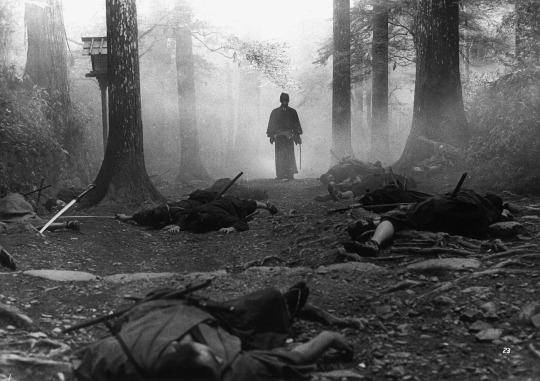
Akira Kurosawa: probably more than any other single source, Kurosawa’s classic samurai movies loom large over Star Wars. Lucas is an unabashed Japanophile, and you can see dozens of details in the movies, the first one especially. Darth Vader’s beetle suit is a stripped down samurai armor, the lightsaber battles were modeled on samurai duels more than fantasy sword fights, and several of the characters were given “pseudo”-Japanese names like “Kenobi” to create a sense of exoticism. The plot of the first movie is basically The Hidden Fortress, a film about a general and princess’ escape from a villainous army both with the help and from the perspective of two lowly peasants - peasants who became the series’ Greek chorus C3PO and RD-D2. Lucas even wanted Kurosawa’s most famous collaborator, Toshiro Mifune, to play Han Solo.
1950s car culture: So even though the plot steals from Kurosawa, the premise came from Lucas’ teenage years. He was a fairly typical California kid obsessed with cars, and Luke Skywalker’s desire to get out from under his aunt and uncle’s care was modeled after his own desire to drive away from home in the seat of a classic American car. Most of the spaceships are part-WWII biplane, but also part muscle car, with fins and a smooth design. Instead of planes being generic units, everyone just gets their own; it’s actually kind of like Cowboy Bebop, which also drew from a broad swath of mid-century American culture.
WWII era adventure movies: This one’s fairly well known, I think. The space battles are basically dogfights, the high adventure takes a lot from Errol Flynn movies, and like those, the plots are heavily based around a very clear “good versus evil” plot. Some of these movies have a fatalism that’s really deliberately avoided in Lucas’ stuff, with characters knowing they’re going off to die, but his an have that there - it’s just in the background. And falling in with the prism of “everyone teaming up to fight the villains" through which we typically view World War II, there’s a sense of camaraderie and almost “building up the team” that happens, usually during a grand heroic climax.
Nazi imagery: This is sort of a weird one, because while the shadow of Nazism does loom over Star Wars - the term “Stormtrooper” literally comes from a contingent of the Nazi party that went around assaulting Jews and communists, some shots of villains mimic Triumph of the Will - it’s not really used in a political context. There are political elements found throughout the series (most infamously Lucas’ somewhat tin-eared criticism of Bush-era government overreach), but the Empire isn’t really representative of the Nazis or any other villainous fource, just as I don’t really think the Death Star is emblematic of, say, nuclear weapons. The Empire just represents evil at its most generic, a Rorschach test that can be whatever vaguely oppressive force the viewer wants. Star Wars is an interesting bridge that led the films of the late Sixties and Seventies into the Eighties, and a big part of that is a deliberate avoidance of overtly political storytelling in the name of more broadly popular, non-confrontational “popcorn flicks.” But there’s still an interest in these more difficult political elements at the fringes.

Planet of the Apes: we forget, but Star Wars wasn’t the only big science fiction franchise. There were five Apes movies, and there are a few parallels between the series (notably an emphasis on softer structures, a distrust of technological encroachment of nature, and a sort of Sixties New Age fetishization of the natural world), but what where the influence can really be seen is in the toys. Somewhat weirdly for a series so cynical and fatalistic that thee of the films had to be prequels because humans annihilated the world with a nuke in the second, Apes was one of the first big licensed toy lines, with a whole variety of dolls and playsets. The relationship between the Star Wars films and the Star Wars toys was in place from the first movie, and a lot of how it sold its dolls and playsets was definitely influenced by how Apes did it.
Film serials: we don’t really have these anymore, but classic film serial series of the Thirties through early Fifties were a big influence. For those less familiar, often in that period of time, film showings could be a longer affair; you might see a full-length film, but also documentary newsreels, a cartoon, and short films. Some of those would be serialized, but would include dialogue and writing to help people if they’d not seen the previous episodes. Star Wars shows that from the word go; the entire concept of it being an “Episode 4″ is itself a joke, a recap for a preceding story that doesn’t exist. And tonally, the movies take a lot from these series, with a generally upbeat tone, runtimes and plotting that take a lot from the attitude of those multiple-hour shows, problems that take no more than another episode to solve, and cliffhangers that promise an all new adventure coming up. Revenge of the Sith even puts a point on this by naming a minor character after one of the most famous serials: Commando Cody and the Radar Men from the Moon.
Sixties and Seventies Sci-Fi: This is a case where Lucas was looking at, among other things, his own source: the techno-dystopia TXH-1138, whose title gets a little reference in Star Wars as the cell Princess Leia is held in. Science fiction of those two decades often struck a line between smoother and blockier design, each associated with more optimistic or serene or more cynical and paranoid attitude that kind of defined American cultural attitudes in the mid to late-Seventies. Star Wars kinda bridged the gap; it was optimistic but decidedly apolitical, a world where both sides of the technological divide could exist. The machinery in particular takes a ton from those moves, all monochrome rooms and constant lights and switches. Unsurprisingly, these streams are all mostly tied to Seventies softcore hippiedom, an interest in light transcendental thought. But it’s not really about those; the science itself isn’t the focus. It’s why people - myself included - sometimes discuss Star Wars as not “really” science fiction. I’m not really as interested anymore in having that argument, but it’s certainly indebted to science fiction.
New Hollywood: More than anything, though, Lucas was part of the New Hollywood crew, a new breed of filmmaker that dominated the late Sixties to late Seventies in America. These were (almost all white and male) graduates of newly founded film schools. Influenced by Japanese and French cinema and inspired by communist revolutions (though very much not communist dogma; they viewed themselves as rebels from both marxist and capitalistic conformity), people like Lucas, Steven Spielberg, Martin Scorsese, Francis Ford Coppola, Tobe Hooper, Woody Allen, Roman Polanksi, and Ridley Scott tried to create a “revolution” in western and particularly American film. Lucas’ big pre-Star Wars films were THX and American Graffiti (as well as working on Apocalypse Now for a few years), and each represented two parts of Star Wars: oppressive technological social machinery and nostalgic small town chill. Eventually this culture died, partially from Lucas and Spielberg themselves; Jaws and Star Wars became cultural monoliths, altered film distribution, and indirectly began the slow death of both New Hollywood and drive-in theater culture.
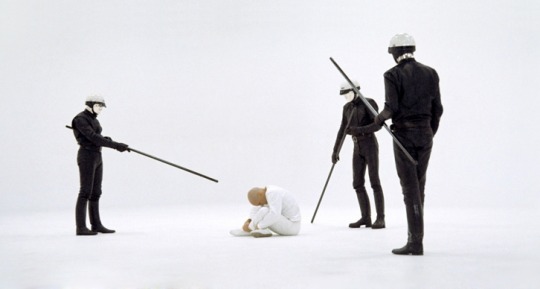
There are other touchstones of less importance. Pretty much everything in Jabba’s Return of the Jedi palace comes from fantasy comics, and especially the art of Conan and death metal album artist Frank Frazetta. The pod-racing sequence in The Phantom Menace is a high-tech chariot race from religious epics like Ben-Hur. And certainly the tropes of fantasy storytelling are huge. Luke and Anakin aren’t just skilled young men; they’re heirs to a great legacy (and in one case, a comically absurd genetic superiority) that only justifies their importance and worth. The unfortunate racial caricature aliens in his films also come from those, along with many of the war movies and serials, ranging from the more benign (Chewbacca is essentially based on a classic cliché of a parter or servant from a “noble race” who follows his friend, but he’s likable and not indicative to any one culture) to, well, Watto.
And I think this is one of the bigger reasons why I find most of Lucas’ sequels less good, even in many ways preferring Star Wars to The Empire Strikes Back. As the films went on, this wealth of sources contracted, a sign of his becoming less voracious or engaged a consumer of not just pop culture but art as a whole. It’d pop up in a few ways, like the Ewoks’ defeat of the Empire alluding to the Vietnam War (whose end was still being processed in the culture), but generally those sources stayed unchallenged: Monochrome halls, dogfights, samurai duels, and fancy ships. As much as I’ve little interest in relitigating the prequels, I still maintain that their fundamental problem comes from Lucas not updating those sources, not using mysteries or film noir to craft a story set in the past.
And, of course, then came J.J. Abrams, and while I certainly enjoyed The Force Awakens far more than the prequels, it gets even worse under him, because that’s a Star Wars film where the only reference is just Star Wars itself. If the best parts of the film are about Rey, Finn, and Kylo Ren struggling to live up to the legacy of Star Wars and its iconography - the shot of Rey eating under the giant mass of overbearing Star Wars trash is a favorite - than the worst is when it’s just redoing that iconography, most intensely in yet another X-Wing battle against yet another, dumber Death Star. And that one didn’t even kill off Greg Grunberg. I try to avoid “X fan-fiction” when describing something like this, but it’s reminiscent of modern superhero comics that are only about modern superhero comics, only really interested in the same tropes and icons.
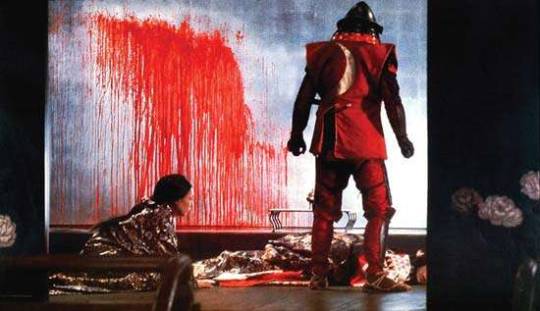
And that’s also one of the greatest reasons I loved The Last Jedi so much, because it went back to those sources and reimagined them. So we get World War II culture, but instead of dogfighting it’s Casablanca, with two characters descending into a sleazy, corrupt world that’s ostensibly free from these endless space battles. We get this interest in politics, but it goes from focusing solely on the evil First Order to this idea that all these battles are more at the whims of an unseen military-industrial complex than anything else. And it even introduces new ideas of its own, from humor more akin to Mel Brooks than anything Lucas could ever do to a cheeky enjoyment of hinting at high octane violence in an otherwise family movie. Playing at the latter in particular leads to some brilliant visual splendor, with exploring red salt and crimson wall carpeting substituting for geysers of blood, and one major character’s visceral demise feels like something from an Evil Dead movie, equal parts horrific and hilarious.
But more than anything else, it’s the Japanese influence. Rian Johnson is another Japanophile and otaku, but he brings in his own wealth of influence, from other Japanese directors - mostly those who worked in the debatably trashier sections of the “chanbara” samurai genre - to even fatalistic manga and anime. Laura Dern’s awesome purple hair makes it implicit, but that sequence of her ship’s destruction comes so clearly from something like Gundam or Evangelion, a single gorgeous image conveying incredibly destruction. Even his Kurosawa lifts are different; he draws from the man’s color movies (which emphasized an intense, painterly use of color), and a major plot thread is based on Rashomon (that sequence in particular is interesting for also being on the few times we see a scene in Star Wars that’s dependent on character perspective). The film’s best sequence even ends with Rey and Kylo Ren fighting literal space samurai over walls of metaphorical blood.
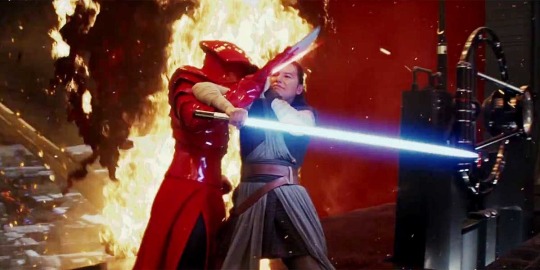
There are also a few times where the film seems to bring in some of the prequel influence, with that casino planet or the more heavily choreographed fight scenes, and others when it outwardly deconstructs some of the series’ tropes. It all leads to this film that felt, at least to me, to be the first really “necessary” (such as it is) Star Wars film since the first, something as idiosyncratic as Lucas’ original.
I’m not sure exactly how to conclude this, other than to say when creating art, it’s easy to fall into a trap of just reusing your sources. I do that more often than I’d like, certainly. But bringing in new things can help. I recently started watching Cowboy Bebop again for the first time since college, and thinking about how that show used spaceships as car and plane analogues made me think about another way artists were able to come at the same ideas. And I don’t think knowing that Lucas was cribbing from these (and that his various producers and editors were keeping him under control to make a comprehensible final product) lessens any of the “magic” of them; at least to me it enhances it.
Though I should also note again that this is nowhere near a comprehensive list, and there is definitely a huge wealth of material he and everyone involved in the making of the movie exploited or used that I forgot about or haven’t noticed. But that often is how the process works; you bring in all sorts of ideas.
6 notes
·
View notes
Photo
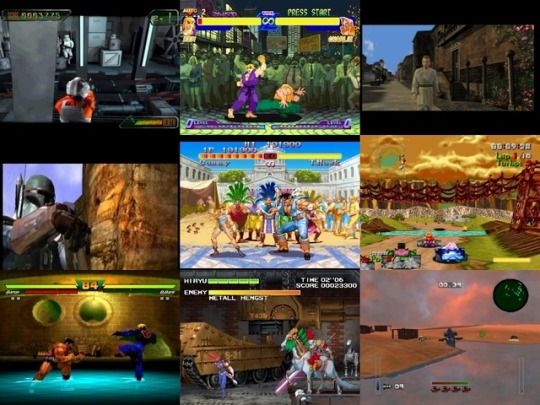
“PSX DATACENTER UPDATE 7-SEPTEMBER-2019″
[PS1] [USA][PAL] [JAPAN] [2019]
7-September-2019
7-Septiembre-2019
I have added today the following game entries to the PSX Datacenter:
Añadidas las siguientes entradas a la PSX Datacenter:
NTSC-J:
Superlite 3 in 1 - Series Crossword-Syuu [SLPM-86954] (J)
UPDATES:
Star Wars Episode I - Jedi Power Battles [SLUS-01046] (E)
Star Wars Episode I - Jedi Power Battles [SLES-02607] (E)
Star Wars Episode I - Jedi Power Battles [SLES-02608] (F)
Star Wars Episode I - Jedi Power Battles [SLES-02609] (G)
Star Wars Episode I - Jedi Power Battles [SLES-02610] (I)
Star Wars Episodio I - Jedi Power Battles [SLES-02611] (S)
Star Wars - Masters of Teräs Käsi [SLPS-01464] (J)
Star Wars - Master of Teräs Käsi [SLUS-00562] (E)
Star Wars - Master of Teräs Käsi [SLES-01111] (E)
Star Wars - Rebel Assault II - The Hidden Empire [SLUS-00381] (E)
Star Wars - Rebel Assault II - The Hidden Empire [SLPS-00638~9] (E)
Star Wars - Rebel Assault II - The Hidden Empire [SLES-00654 & SLES-10654] (E)
Star Wars - Rebel Assault II - The Hidden Empire [SLES-00584 & SLES-10584] (G)
Star Wars - Rebel Assault II - The Hidden Empire [SLES-00656 & SLES-10656] (F)
Star Wars - Rebel Assault II - The Hidden Empire [SLES-00643 & SLES-10643] (I)
Star Wars - Rebel Assault II - The Hidden Empire [SLES-00644 & SLES-10644] (S)
Street Fighter Alpha - Warriors' Dreams [SLUS-00197] (E)
Street Fighter Zero [SLPS-00176] (J)
Street Fighter Alpha - Warriors' Dreams [SLES-00199] (E)
Street Fighter Collection [SLUS-00423 & SLUS-00584] (E)
Street Fighter Collection [SLPS-00800-1] (J)
Street Fighter Collection [SLES-00998 & SLES-10998] (E)
Street Fighter EX Plus Alpha [SLUS-00548] (E)
Street Fighter EX Plus Alpha [SCPS-45074] (J)
Street Fighter EX Plus Alpha [SLPM-86041] (J)
Street Fighter EX Plus Alpha [Playstation the Best] [SLPS-91088] (J)
Street Fighter EX Plus Alpha [SLES-00939] (E)
Street Racer Extra [SLPS-00610] (J)
Street Racer [SLUS-00099] (E)
Street Racer [SLES-00296] (E)
Strider 2 [SLUS-01142 & SLUS-01163] (E)
Strider Hiryuu 1 & 2 [SLPS-02620-1] (J)
Strider Hiryuu [Capcom Game Books] [SLPM-87401] (J)
Strider 2 [SLES-02867 & SLES-12867] (E)
Strike Point [SLUS-00139] (E)
Strike Point [SLES-00425] (E)(F)(G)(I)(S)
Added new descriptions, hires covers & screenshots.
MANUALS:
Spice World (S) [SCES-01234] Extra booklet 2
Manual scans by Diegorbb93, cleaned & compiled into cbr by gladiator.
Check them here:
http://www.psxdatacenter.com/
or
http://psxdatacenter.com/
Have fun and if you can help us with the missing information (covers, descriptions, cheats, etc.) please do it.
If you want to contribute to the site running costs (domain, server, updates, etc.) please consider becoming our patreon or making a donation on our ko-fi.
http://patreon.com/psxdatacenter
https://ko-fi.com/C1C8LCDH
#star wars#strike point#strider#street fighter#street racer#video games#retrogaming#psxdatacenter#ePSXe#teras kasi#martial arts#street fighter alpha#rebel assault ii#epsxe for android
0 notes
Photo
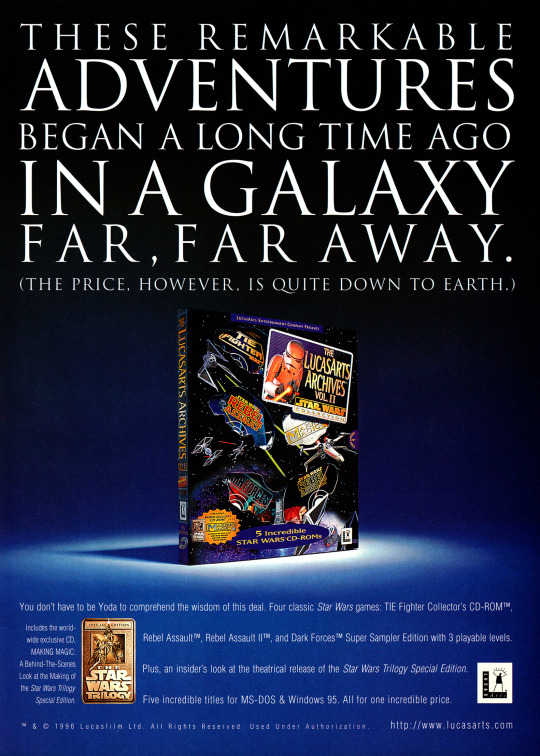
USA 1996
#USA1996#LUCASARTS#ACTION#SIMULATION#LICENSED#STAR WARS#IBM#MACINTOSH#STAR WARS TIE FIGHTER#STAR WARS REBEL ASSAULT#STAR WARS REBEL ASSAULT II THE HIDDEN EMPIRE#STAR WARS DARK FORCES#THE LUCASARTS COLLECTION VOL. II STAR WARS COLLECTION
55 notes
·
View notes
Text
Die Gaming-Welt ist in heller Aufregung, da jüngste Leaks möglicherweise neue Schätze für den PlayStation Plus Classics Katalog enthüllen. An vorderster Front dieser Enthüllungen steht die Sichtung einer neuen Trophäenliste für das beliebte PS1-Spiel "MediEvil" auf renommierten Achievement-Tracking-Webseiten, was auf seine baldige Ankunft in der Bibliothek der PlayStation Plus Premium-Abonnenten hindeutet. Diese Ergänzung scheint auf der vorherigen Aufnahme von "MediEvil: Resurrection" der PSP aufzubauen und bereichert somit das nostalgische Angebot für Spielefans.
Ein weiterer Klassiker, der Schlagzeilen macht, ist "Star Wars: Rebel Assault II: The Hidden Empire", dessen Erscheinen im PlayStation Plus Classics Katalog erwartet wird, mit auf der PlayStation Store-Seite enthülltem Veröffentlichungsdatum Mitte April. Diese erwarteten Veröffentlichungen unterstreichen Sonys fortwährendes Engagement, klassische Spielerlebnisse mit modernen Annehmlichkeiten für seine Abonnenten zu vermischen.
In einem Schritt, der die Spielmöglichkeiten auf PlayStation Plus weiter diversifiziert, bestätigte Sony die Hinzufügung von "Dave the Diver" zum PlayStation Plus Spielkatalog, neben dem Debüt von "Tales of Kenzera: Zau" im gleichen Zeitraum. Der PlayStation Plus Essential Service bleibt nicht zurück, mit Titeln wie "Immortals of Aveum", "Minecraft Legends" und "Skul: The Hero Slayer", die ein breites Spektrum an Spielerinteressen bedienen.
Der bereicherte PlayStation Plus Service wird zunehmend umfassender und integriert klassische Titel mit neu eingeführter Trophäenunterstützung und modernen Funktionen wie der Möglichkeit, überall zu speichern und das Gameplay für ausgewählte PS1- und PSP-Spiele zurückzuspulen. Verbesserungen in der Spielauflösung und die Einführung von Filtern sind ebenfalls Teil des überarbeiteten Services und zielen darauf ab, ein nahtloses und nostalgisches Spielerlebnis auf zeitgemäßer Hardware zu liefern.
Für Liebhaber klassischer Spiele und Trophäenjäger gleichermaßen stellt die Integration von Trophäenlisten für Titel wie "Ape Escape" und "I.Q.: Intelligent Qube" Sonys Bestreben dar, Nostalgie mit den Feinheiten der modernen Spielkultur zu verbinden.
Während PlayStation Plus weiterhin fortschreitet, sorgt die Erweiterung der Bibliothek mit klassischen und aktuellen Titeln nicht nur für eine Bereicherung des Abonnentenerlebnisses, sondern gewährleistet auch, dass das Vermächtnis ikonischer Spiele für zukünftige Generationen erhalten bleibt.
Für weitere Details zu den Leaks und Updates zum PlayStation Plus-Service können Interessierte die umfassenden Berichte auf Video Games Chronicle besuchen und weitere Einblicke bei PlayStation LifeStyle, Eurogamer und TrueTrophies erkunden.
0 notes
Text
STAR WARS AND THE TURN OF THE CENTURY

One of the biggest film franchises in the world not only changed Hollywood, but correlated perfectly with the ebb and flow of current events. As the new wave of Hollywood, inspired by the likes of the French New Wave and realism, shifted in, the resurgence of fantasy inspired by the worldwide obsession with JRR Tolkien's Lord of the Rings novels. Meanwhile, President Richard Nixon’s impeachment and Watergate made headlines alongside the Vietnam War raging. Thus, in 1977, Star Wars joined the headline-making ranks by creating a world-record box office earning and creating lines out the cinema doors. The film and its successors created a fantasy setting with many subtle hints to human interest. The Star Wars film series is reflection of three facets in American politics - WWII shaping international climates, the goings-on and presidential legislation between the years of 1977 to 1983, and the surge of social justice against the rise of old-fanged cultural norms and laws.
Fresh-faced director George Lucas was in the small round-up of recently graduated film students, joining Martin Scorsese, Francis Ford Coppola, and budding industry indie darlings like Robert Altman and Hal Ashby. He and Coppola collaborated and created their own production company, but Lucas soon started Lucasfilm, Ltd., both created to make an environment for young, independent filmmakers. After the unsuccessful THX 1138, Lucas had a desire to continue making science fiction films . His adoration and nostalgia for Flash Gordon comics led him to attempt to try and buy the rights for a film series, but to no avail. Instead, he began writing his own script in 1973, entitled The Star Wars. As the decade crawled on, more rewrites of the script piled up, adding more elements of fantasy and quests, revolving around a character called “Luke Starkiller”. Once production began in 1976, “Starkiller” was changed to “Skywalker”. Lucas knew what he wanted and worked with what he had - he wanted elements of Akira Kurosawa’s The Hidden Fortress, but with the budget and thrill of a Roger Corman film. While the organized crew were talented, troubles were rife on set. Gary Kurtz, the producer, as well as Gilbert Taylor, the cinematographer, butt heads with Lucas on anything from lighting to locations. Lucas also was not very attentive to actors and they took the film less than seriously. Once post-production came, the film was $2 million over budget and the first cut was less than ideal. 20th Century Fox and the rest of the crew assumed the worst of the summer release - they thought wrong.
The mid-70s in the United States saw a surge of Vietnam-themed films, but quietly continued the tradition of World War II-themed films internationally. A New Hope and its successors included subtle and not-so-subtle allusions and semiotic references to World War II. The stormtroopers, Imperial guards for the Empire, share a name with German assault troops. Names of planets and cities were taken from terms and people involved in World War II - the planet Hoth in The Empire Strikes Back comes from Hermann Hoth, a German general from the Eastern front, which was wintry, the planet Tatooine where Luke resides is named after a province in the south of Tunisia, which was a battlefield. While the fighter pilots and spaceships were designed and inspired by 2001: A Space Odyssey, the battles themselves were inspired by dogfights. The Empire has many allusions to Nazis, from Senator Palpatine being a representation to dictators like Adolf Hitler, The Great Jedi Purge referenced in Attack of the Clones alludes to the Holocaust and other ethnic purges by the Nazis. Two moments, on at the end of A New Hope and another in The Force Awakens visually reference Leni Riefenstahl's Triumph of the Will, the medal ceremony and the New Order lined up in front of General Hux, respectively. The film presents these themes and the antagonists without nuance, but purely as evil. The franchise, through semiotics, convinces the audience that the regime of the Empire or any true-life similar groups are not to be trusted are to be dismantled. Regardless of the Rebel Alliance’s rule breaking and varying moral compasses, the audience is meant to root for them.
Once the first film became a hit, talks started for sequels. Lucas, turned off by the Hollywood system, used his own money to fund The Empire Strikes Back and stepped away from directing, giving the role to his former professor and dramatic film director Irvin Kershner. Science fiction writer Leigh Brackett was hired to co-write the script, but died soon after a treatment that Lucas did not approve of was written. He took their collaboration and added elements of darkness - Darth Vader revealing he is Luke’s father, Han Solo being frozen, and inventing a backstory including the origin of Darth Vader. The film was released in 1980, box office earnings letting Lucas regain his investment and more. While producer Gary Kurtz appreciated Lucas’ approach of moving the series away from children’s films and adding elements of dark drama, critics were not impressed with the operatic, effect-laden nature. Regardless, pre-production of Return of the Jedi commenced, once again being financed by Lucas’ own money. Richard Marquand was hired to direct the film after Lucas approached both David Lynch and David Cronenberg and they each declined. Marquand recalled that even though Lucas’ hand was in the special effects and financing, he still had an eye on the set and would step into direct second unit. Screenwriter Lawrence Kasdan insisted “Return” should be replaced with “Revenge” in title, and was distributed as such until Lucas quipped that revenge is against Jedi code. The last film of the series, released in 1983, was as much of a hit as the others with some more positive critical reaction.
Since the original trilogy occurred during the presidency of Jimmy Carter and Ronald Reagan and was created during Nixon’s, common correlation between the themes of the film and their presidencies. Lucas especially made reference to Nixon and the Vietnam War in the original trilogy, being a proponent against both. He stated in 2005, “It’s all really about the Vietnam War”. Nixon’s attempt to reclaim a second term of presidency worried Lucas and thought of dictatorships in which leaders ran for re-elections and gained power through experience. Ewoks in Return of the Jedi represented the Vietcong and their triumph over the United States. Star Wars overall evokes an anti-war stance, but will engage if needed. It overall sends a wary eye toward Nixon, Carter, and Reagan and each other their legislation.
The series, while still as popular after merchandise and novelization sales, did not see any more films until 1999. The prequel trilogy planned for the series was put on halt after Lucas was left with little money after a hefty divorce settlement in 1987. His desire to direct or continue Star Wars dwindled, until he saw the fanbase was still growing, as well as seeing CGI had made great expansions in the early 1990s. In 1994, Lucas decided the prequels were back on and started writing Episode I: The Beginning. Extensive design, stunts, and new technology were implemented in pre-production. In 1997, while Lucas was looking for directors for the prequels, he planned a home video restoration of the original trilogy with added CGI elements that he originally wanted. After Ron Howard, Robert Zemeckis, and Steven Spielberg found the project “too daunting”, Lucas directed and wrote all three projects. Each, spanning from 1999 until 2005, were box office successes, but were critically ripped by fans. Many despised the inclusion of Gungan Jar Jar Binks and the overall writing and acting. Afterwards, animated television series were developed for children’s channels and franchise laid low.
George Bush’s presidency and his successor, Barack Obama, met a lot of criticism on all sides of the political spectrum. Cliff Vaughn at the same time of release of Revenge of the Sith made comparisons between the plot of the film and the Bush administration - Senator Palpatine’s rise to power in the film, forum commenters pointed, is much like President Bush’s. Critics of President Obama later made the same comparisons. Film critic David Ansen in 2005 stated, "It is clear that there's a parallel between the Bush administration and the rise to power of the Empire, the Evil Empire”. For American audiences and making sense of Bush until Trump, even, their abhorrence or approval of the president can be related to characters. Rogue One was infinitely related to the impending Trump administration and fears from critics of the film, besides being true to A New Hope.
In most recent years, Lucas has stepped down from any on-set, directing, or writing development for the franchise and sold Lucasfilm to The Walt Disney Company in 2012. Producer Kathleen Kennedy became president of Lucasfilm under Disney and currently foresees current and future projects. In 2015, the company hired JJ Abrams to direct a new film, only released to the public as a series of sequels to the original trilogy. Lucas offered creative help during pre-production, as he claims the ideas for a sequel trilogy came as early as 1976. Until the acquired rights of Lucasfilm and the franchise, Lucas was adamant on not letting the sequels come to fruition, regardless of the countless drafts of potential scripts, as well as Timothy Zahn’s novel series about his own iteration of the sequels. 2015 came The Force Awakens, introducing new characters side-by-side with original trilogy characters. The film was met with immediate box office and critical success, mimicking the premiere of A New Hope. Kennedy also announced an anthology series, as well as supplemental films. In 2016, Rogue One: A Star Wars Story was released, acting as a bridge between Episode III and Episode IV. At the same time, a Han Solo pre-Episode IV film was announced.
The future of Star Wars - and politics - is foreseeable, but mostly vague. Kathleen Kennedy and the Disney corporation have made their announcements for future projects and Donald Trump’s executive orders alongside Congress’ plans fiscally and socially have provided a path, but who can tell what can and will come to fruition. Overall, Star Wars will continue to inspire filmmakers, activists, creatives, and possibly politicians in years to come due to its subject matter.
Works Cited:
Kline, Sally. George Lucas: Interviews. University Press of Mississippi, 1999.
Leonard, Devin. “How Disney Bought Lucasfilm—and Its Plans for 'Star Wars'.” Bloomberg, 7 Mar. 2013, www.bloomberg.com/news/articles/2013-03-07/how-disney-bought-lucasfilm-and-its-plans-for-star-wars#p1.
Rabb, David. “How 'Star Wars' Suprised the World.” American Heritage, 25 May 2006, www.americanheritage.com/content/how-star-wars-surprised-world.
Vaughn, Cliff. “Politics in 'Star Wars' Draw Bush Administration Comparisons.” Columns on Culture and Media, 19 May 2005, www.ethicsdaily.com/politics-in-star-wars-draw-bush-administration-comparisons-cms-5774.Wetmore,
Kevin J. The Empire Triumphant: Race, Religion and Rebellion in the Star Wars Films. McFarland, 2005.
0 notes
Photo

USA 1996
#USA1996#LUCASARTS#ACTION#LICENSED#STAR WARS#IBM#MACINTOSH#PS1#STAR WARS REBEL ASSAULT II THE HIDDEN EMPIRE
21 notes
·
View notes
Photo
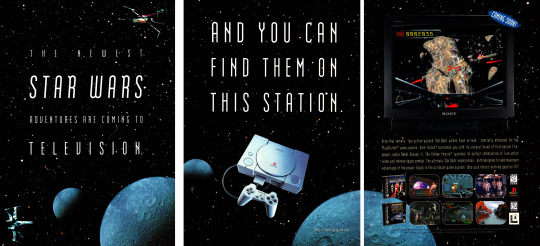
USA 1996
#USA1996#LUCASARTS#ACTION#LICENSED#STAR WARS#IBM#MACINTOSH#PS1#STAR WARS DARK FORCES#STAR WARS REBEL ASSAULT II THE HIDDEN EMPIRE
18 notes
·
View notes
Photo
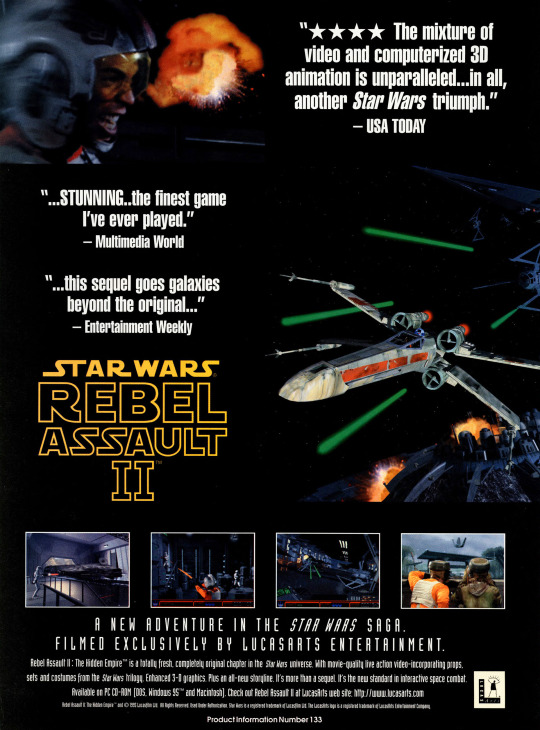
USA 1996
#USA1996#LUCASARTS#ACTION#LICENSED#STAR WARS#IBM#MACINTOSH#PS1#STAR WARS REBEL ASSAULT II THE HIDDEN EMPIRE
10 notes
·
View notes